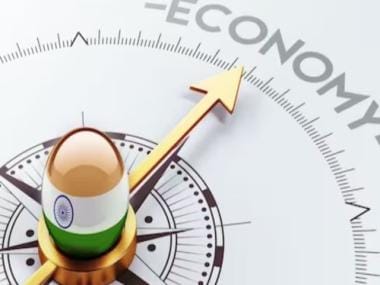India can aspire to become a $7 trillion economy by 2030, according to “The Indian Economy: A Review” written by V Anantha Nageswaran, Chief Economic Adviser to the government, and his team of economists.
The 74-page document is “not the Economic Survey of India prepared by Department of Economic Affairs (DEA)” but rather a document that takes stock of the state of the Indian economy and its journey in the last 10 years.
India becoming a $7 trillion economy in the next six-seven years (by 2030) would be a significant milestone in the journey to delivering quality of life and standard of living that match as well as exceed the aspirations of Indians, the review of the economy further stated.
$7 trillion Indian economy
The review further said reforms undertaken over the last 10 years by the central government have formed the foundation of a resilient, partnership-based governance ecosystem and have restored the ability of the economy to grow healthily.
“There are good reasons to believe India’s economic and financial cycles have become longer and stronger. Consequently, India is poised for sustained brisk growth in coming years,” the review said.
GDP growth at 7% in fiscal year 2025
The Chief Economic Adviser (CEC) has pegged the growth rate of the Indian economy to be 7 per cent in fiscal year 2025 after growing at or above 7 per cent in 2023-24. This would get fillip from resilient domestic demand despite risks and uncertainties in the global economic landscape.
“If the prognosis for FY25 turns out to be right, that will mark the fourth year post-pandemic that the Indian economy will have grown at or over 7 per cent. That would be an impressive achievement, testifying to the resilience and potential of the Indian economy. It augurs well for the future,” Nageswaran said in the review.
Meanwhile, as per National Statistical Office (NSO), the Indian economy is estimated to grow 7.3 per cent in 2023-24, while Reserve Bank of India (RBI) projected a 7 per cent growth rate for the current fiscal year.
“It is one thing for India to grow at 8–9 per cent when the world economy is growing at 4 per cent, but it is another thing to grow at or above 7 per cent when the world economy is struggling to grow at 2 per cent,” Nageswaran added.
What has driven demand?
As per the review, the robust domestic demand has driven the economy to a 7 per cent plus growth rate in the last three years.
“The robustness seen in domestic demand, namely, private consumption and investment, traces its origin to the reforms and measures implemented by the government over the last ten years,” the review of the economy said.
“The supply side has also been strengthened with investment in infrastructure – physical and digital – and measures that aim to boost manufacturing. These have combined to provide an impetus to economic activity in the country,” according to the review.
“Only the elevated risk of geopolitical conflicts is an area of concern. Priority areas for future reforms include skilling, learning outcomes, health, energy security, reduction in compliance burden for MSMEs, and gender balancing in the labour force,” it said.
Challenges before Indian economy
The CEA also highlighted the challenges in front of the Indian economy and said the “recent events in the Red Sea may have brought back concerns over reliance on global supply chains, further aggravating the slower growth in global trade in 2023.”
“Exporting one’s way to growth will not be easy. Global economy is struggling to maintain recovery post-Covid because successive shocks have buffeted it. Supply chain disruptions have returned in 2024,” the CEA said.
Nageswaran further said the “advent of Artificial Intelligence (AI) with the profound and troubling questions it poses for growth in services trade and employment since technology might remove the advantage of cost competitiveness that countries exporting digital services enjoy…Third, and arguably the most important is the energy transition challenge.”
The review of the economy also listed that concerns over rising temperatures have led to a single-minded focus on reducing carbon emissions, amidst the determination that the emission of greenhouse gases, particularly carbon, is the most significant causal factor.
With inputs from agencies
Link to article –





